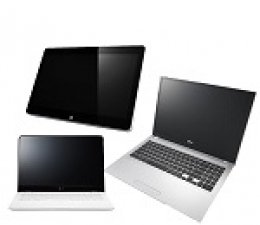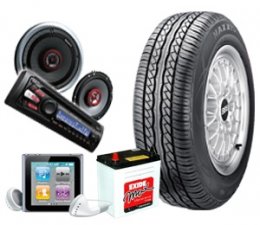WATCHES
A watch is a small timepiece intended to be carried or worn by a person. It is designed to keep working despite the motions caused by the person's activities. A wristwatch is designed to be worn on a wrist, attached by a watch strap or other type of bracelet. A pocket watch is designed for a person to carry in a pocket.
History
Watches evolved from portable spring-driven clocks, which first appeared in 15th century Europe. Watches weren't widely worn in pockets until the 17th century. One account says that the word "watch" came from the Old English word woecce which meant "watchman", because it was used by town watchmen to keep track of their shifts at work. Another says that the term came from 17th century sailors, who used the new mechanisms to time the length of their shipboard watches (duty shifts).
Watches evolved in the 17th century from spring-powered clocks, which appeared as early as the 14th century. The first watches were strictly mechanical, driven by clockwork. As technology progressed, mechanical devices, used to control the speed of the watch, were largely superseded by vibrating quartz crystals that produce accurately timed electronic pulses. Some watches use radio clock technology to regularly correct the time. The first digital electronic watch was developed in 1970.
Movement
A movement of a watch is the mechanism that measures the passage of time and displays the current time (and possibly other information including date, month and day). Movements may be entirely mechanical, entirely electronic (potentially with no moving parts), or they might be a blend of both. Most watches intended mainly for timekeeping today have electronic movements, with mechanical hands on the watch face indicating the time.
Mechanical movements
A mechanical movement uses an escapement mechanism to control and limit the unwinding and winding parts of a spring, converting what would otherwise be a simple unwinding into a controlled and periodic energy release. A mechanical movement also uses a balance wheel together with the balance spring (also known as a hairspring) to control motion of the gear system of the watch in a manner analogous to the pendulum of a pendulum clock. The tourbillon, an optional part for mechanical movements, is a rotating frame for the escapement, which is used to cancel out or reduce the effects of gravitational bias to the timekeeping. Due to the complexity of designing a tourbillon, they are very expensive, and only found in prestigious watches.
Compared to electronic movements, mechanical watches are less accurate, often with errors of seconds per day, and they are sensitive to position, temperature and magnetism. They are also costly to produce, require regular maintenance and adjustments, and are more prone to failures
Automatic watches
A self-winding or automatic watch is one that rewinds the mainspring of a mechanical movement by the natural motions of the wearer's body. The first self-winding mechanism was invented for pocket watches in 1770 by Abraham-Louis Perrelet, but the first "self-winding", or "automatic", wristwatch was the invention of a British watch repairer named John Harwood in 1923. This type of watch winds itself without requiring any special action by the wearer. It uses an eccentric weight, called a winding rotor, which rotates with the movement of the wearer's wrist. The back-and-forth motion of the winding rotor couples to a ratchet to wind the mainspring automatically. Self-winding watches usually can also be wound manually to keep them running when not worn or if the wearer's wrist motions are inadequate to keep the watch wound.
Electronic movements
Electronic movements, also known as quartz movements, have few or no moving parts, except a quartz crystal which is made to vibrate by the piezoelectric effect. A varying electric voltage is applied to the crystal, which responds by changing its shape so, in combination with some electronic components, it functions as an oscillator. It resonates at a specific highly stable frequency, which is used to accurately pace a timekeeping mechanism. Most quartz movements are primarily electronic but are geared to drive mechanical hands on the face of the watch to provide a traditional analog display of the time, a feature most consumers still prefer.
Electronic watches require electricity as a power source, and some mechanical movements and hybrid electronic-mechanical movements also require electricity. Usually the electricity is provided by a replaceable battery. The first use of electrical power in watches was as a substitute for the mainspring, to remove the need for winding. The first electrically powered watch, the Hamilton Electric 500, was released in 1957 by the Hamilton Watch Company of Lancaster, Pennsylvania
Some electronic watches are powered by the movement of the wearer. For instance, Seiko's kinetic-powered quartz watches use the motion of the wearer's arm: turning a rotating weight which causes a tiny generator to supply power to charge a rechargeable battery that runs the watch. The concept is similar to that of self-winding spring movements, except that electrical power is generated instead of mechanical spring tension.
Display
Analog Display
Analog display of the time is nearly universal in watches sold as jewelry or collectibles, and in these watches, the range of different styles of hands, numbers, and other aspects of the analog dial is very broad. In watches sold for timekeeping, analog display remains very popular, as many people find it easier to read than digital display; but in timekeeping watches the emphasis is on clarity and accurate reading of the time under all conditions (clearly marked digits, easily visible hands, large watch faces, etc.). They are specifically designed for the left wrist with the stem (the knob used for changing the time) on the right side of the watch; this makes it easy to change the time without removing the watch from the wrist. This is the case if one is right-handed and the watch is worn on the left wrist (as is traditionally done). If one is left-handed and wears the watch on the right wrist, one has to remove the watch from the wrist to reset the time or to wind the watch.
Tactile
Tissot, a Swiss luxury watchmaker, makes the Silen-T wristwatch with a touch-sensitive face that vibrates to help the user to tell time eyes-free. The bezel of the watch features raised bumps at each hour maker; after briefly touching the face of the watch, the wearer runs a finger around the bezel clockwise. When the finger reaches the bump indicating the hour, the watch vibrates continuously, and when the finger reaches the bump indicating the minute, the watch vibrates intermittently.
Digital
A digital display simply shows the time as a number, e.g., 12:08 instead of a short hand pointing towards the number 12 and a long hand 8/60 of the way round the dial. The digits are usually shown as a seven-segment display.
Most watches with LED displays required that the user press a button to see the time displayed for a few seconds, because LEDs used so much power that they could not be kept operating continuously. Usually the LED display color would be red. Watches with LED displays were popular for a few years, but soon the LED displays were superseded by liquid crystal displays (LCDs), which used less battery power and were much more convenient in use, with the display always visible and no need to push a button before seeing the time. Only in darkness you had to press a button to light the display with a tiny light bulb, later illuminating LEDs.
Functions
A complicated watch has one or more functions beyond the basic function of displaying the time and the date; such a functionality is called a complication. Two popular complications are the chronograph complication, which is the ability of the watch movement to function as a stopwatch, and the moonphase complication, which is a display of the lunar phase. Other more expensive complications include Tourbillon, Perpetual calendar, Minute repeater, and Equation of time. A truly complicated watch has many of these complications at once (see Calibre 89 from Patek Philippe for instance). Some watches can both indicate the direction of Mecca and have alarms that can be set for all daily prayer requirements. Among watch enthusiasts, complicated watches are especially collectible. Some watches include a second 12-hour or 24-hour display for UTC or GMT.
The similar-sounding terms chronograph and chronometer are often confused, although they mean altogether different things. A chronograph is a watch with an added duration timer, often a stopwatch complication (as explained above), while a chronometer watch is a timepiece that has met an industry standard test for performance under pre-defined conditions: a chronometer is a high quality mechanical or a thermo-compensated movement that has been tested and certified to operate within a certain standard of accuracy by the COSC (Contrôle Officiel Suisse des Chronomètres). The concepts are different but not mutually exclusive; so a watch can be a chronograph, a chronometer, both, or neither.
Uses
Fashion
Wristwatches and antique pocket watches are often appreciated as jewelry or as collectible works of art rather than just as timepieces. This has created several different markets for wristwatches, ranging from very inexpensive but accurate watches (intended for no other purpose than telling the correct time) to extremely expensive watches that serve mainly as personal adornment or as examples of high achievement in miniaturization and precision mechanical engineering.
Traditionally, men's dress watches appropriate for informal (business), semi-formal, and formal attire are gold, thin, simple, and plain, but increasingly rugged, complicated, or sports watches are considered by some to be acceptable for such attire. Some dress watches have a cabochon on the crown and many women's dress watches have faceted gemstones on the face, bezel, or bracelet. Some are made entirely of faceted sapphire (corundum).
Using a watch and the sun as a compass
There is a traditional method by which an analog watch can be used to locate north and south. The Sun appears to move in the sky over a 24-hour period while the hour hand of a 12-hour clock face takes twelve hours to complete one rotation. In the northern hemisphere, if the watch is rotated so that the hour hand points toward the Sun, the point halfway between the hour hand and 12 o'clock will indicate south. For this method to work in the southern hemisphere, the 12 is pointed toward the Sun and the point halfway between the hour hand and 12 o'clock will indicate north. During daylight saving time, the same method can be employed using 1 o'clock instead of 12. This method is accurate enough to be useful only at fairly high latitudes.
We stock quality wrist watches for both men and women at Deluxe online store. Shop with us today and get the best for your money.







